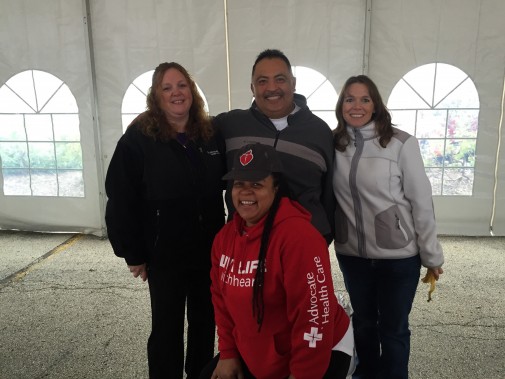Related Posts
Comments
About the Author
health enews staff is a group of experienced writers from our Advocate Health Care and Aurora Health Care sites, which also includes freelance or intern writers.

In February 2014, Bernie Salazar asked a friend to drive him to Advocate Condell Medical Center because he was experiencing shortness of breath. After being examined, he was admitted for heart failure and prepped for a procedure to upgrade his defibrillator that was implanted a few years prior. During the procedure his condition quickly declined, and he was ultimately transferred to Advocate Christ Medical Center in Oak Lawn, Ill., to receive a Left Ventricular Assist Device (LVAD).
An LVAD is a surgically implanted mechanical pump attached to the heart that continuously takes blood from the left ventricle, moves it to the aorta and then delivers oxygen-rich blood throughout the body. The device is powered by batteries or electricity and is worn in a carrying case throughout the day outside the body.
“The Christ LVAD team, the transplant team and our Condell team all worked together to provide the best plan of care,” says Linda Nixon, a heart failure nurse navigator at Advocate Condell Medical Center in Libertyville, Ill. “We provide great teamwork through open communication.”
Due to the collaborative VAD care program at Advocate Christ Medical Center, patients have the ability to do their routine follow-up appointments with their designated Advocate shared care sites. Therefore, once Salazar was discharged he was able to return to his home in North Chicago, just a short drive away from Advocate Condell where he continued his three month cardiac rehabilitation program.
Beyond the heart scare, Salazar, 41, is healthy and active person. He’s also qualified for the heart transplant list. While he waits to receive a transplant, Salazar goes to the hospital regularly for check-ups at the heart failure center.
With the help of the support system at the heart failure center, he is now able to live his life as independently as possible with the LVAD. Many patients are able to enjoy the same quality of life prior to the surgery and can even see overall improvement in their health. The only restriction he has after his LVAD is that he isn’t allowed to have total underwater submersion.
“I feel stronger now with this device,” Salazar says. “I like to talk to other patients who are considering an LVAD to help them to see that they don’t need to be nervous.”
Salazar often can be found at Advocate Condell helping to educate the nurses and patients about his experience with an LVAD.
“This is another family to me now,” Salazar says.
Do you know your risk for heart disease? Take our heart risk assessment here. If you are at high risk, see one of Advocate Heart Institute’s cardiologists within 24 hours.

health enews staff is a group of experienced writers from our Advocate Health Care and Aurora Health Care sites, which also includes freelance or intern writers.
Get these health and wellness insights emailed to you three times a week.

With our LiveWell app and website, you can manage health and wellness for yourself and for everyone who counts on you.
Download the app
Do you cook from the heart? This is what you need to know.